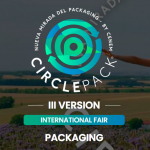Giuseppe Gianetti, retired memeber of the Italian Society of Chemistry, offers a fascinating breakdown of the role of rheological control in converting processes for Packagng MEA.
“In modern industry, quality control of a product is increasingly accomanied by process control, which monitors parameters and records characteristic oscillations.
The measuremet and control of ink according to various parameters is fundamental in flexographic and rotogravure printing. Here we look at the measurement, control and correction of rheological characteristics and their importance in guarateeing a consistent quality of the printed material.
Viscosity is a physical dimension that describes the resistance of a fluid to flow. At a microscopic level, viscosity is linked to the friction between the molecules of the fluid. When fluid flows into a container, the layers of particles generally move faster in the vicinity of the elemet that generates the motion and more slowly as you move away from it. The difference in fluid speed when moving away from the point that generates the motion is proportional to its viscosity. It is a motion transfer property: the higher the viscosity, the greater the difference in speed betwee adjacent fluid layers. Fluidity is therefore defined as the reciprocal magnitude of viscosity.
When we talk about liquid inks or varnishes (flexography or rotogravure), the viscosity control parameter is a crucial element for the success of the printing. In solvent-based or water-based products, the resins are dissolved and the viscosity depends on the motility of the resin molecules surrunded by the solvent.
Both in flexo and rotogravure printing, ink/varnish transfer takes place by filling and emptying a cell (respectively of the anilox or the engraved cylinder). The phenomenon of inking is regulated by the ease with which the product enters and exits the cell and by the forces that act for or against this movement (centrifugal force created by the rotation of the anilox or cylinder and pressure exerted by the blade and possibility from other specifically added elements).”
Read the full article on Sept-Oct Packaging MEA issue at pages 30-31.
Source of the photo: JJ Harrison, CC BY-SA 3.0, via Wikimedia Commons










